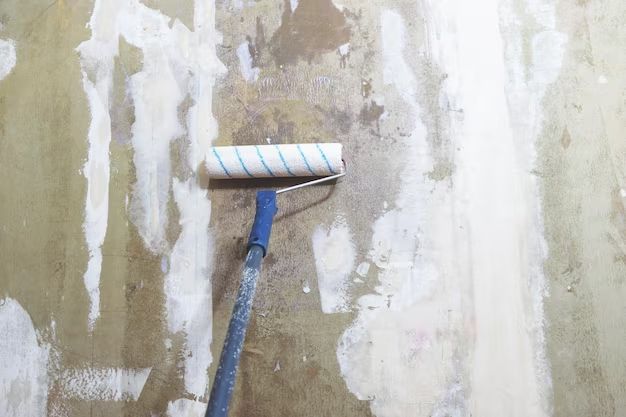Choosing the right primer is crucial for achieving a smooth, durable finish on plaster walls. The type of primer you need depends on the condition of the plaster and what kind of paint you plan to use. Here are some recommendations for selecting a primer for plaster walls:
Page Contents
New, Unpainted Plaster
For new, bare plaster that has not been previously painted, an alkali-resistant primer is recommended. New plaster tends to be quite alkaline, so you need a primer that can stand up to the high pH levels.
Alkali-resistant primers contain binders that prevent the plaster’s alkalinity from saponifying the oils in the primer. This allows the primer to properly adhere to the plaster. Some good alkali-resistant primer options include:
- Zinsser B-I-N Shellac-Based Primer
- SW PrepRite ProBlock Interior/Exterior Alkali-Resistant Primer
- Behr Premium Alkali-Resistant Primer
Two coats of alkali-resistant primer are recommended on new plaster. This will create a solid, reliable base for your finish paint. Make sure to follow the manufacturer’s instructions for proper application and drying times.
Previously Painted Plaster
If repainting previously painted plaster walls, then a regular all-purpose primer designed for interior drywall is all you need. Some good options include:
- Zinsser Bulls Eye 1-2-3 Primer
- KILZ 2 All-Purpose Interior/Exterior Multi-Surface Primer
- PPG Gripper Interior/Exterior Primer
An all-purpose primer seals the surface and creates uniform porosity across the plaster for the new paint. One coat is usually sufficient unless heavy stains are present.
Damaged or Flaky Plaster
For plaster walls that are damaged, cracked, or flaky, a masonry sealing primer is the best choice. These primers penetrate and seal porous mineral surfaces. Some top options include:
- Zinsser Gardz High Performance Sealer
- Valspar Masonry and Plaster Interior Primer Sealer
- kilz Masonry & Plaster Interior/Exterior primer sealer
Two coats are recommended to fully seal the plaster and prevent absorption issues with the finish paint. The primer levels out the plaster surface for a smooth finish.
New Plaster with Varnish or Calcimine Paint
If you have uncovered old varnish or calcimine paint underneath newer paint, you’ll need to seal it before priming. Shellac-based primers work well for this, such as:
- Zinsser B-I-N Shellac-Based Primer
- Kilz Klear Multi-Surface Shellac Based Primer
Apply two coats of the shellac primer to seal in the old finish. Then follow up with two coats of an alkali-resistant primer before painting.
Choosing Finish Paint
Once you’ve properly primed the plaster, the final consideration is picking a durable, high-quality finish paint. Here are some top options:
- Latex or acrylic paint – provides flexibility and breathability on plaster.
- Eggshell or satin finish – hides imperfections better than flat or glossy paints.
- Higher sheen paints – tend to be more washable for kitchens/bathrooms.
- VOC-free paint – important for indoor air quality.
Be sure to follow the manufacturer’s recommendations for drying time between coats. This ensures proper curing and adhesion. With the right preparatory steps and finish paint, your plaster walls will have a beautiful, lasting finish.
Conclusion
Choosing the correct primer is the key first step for a successful paint job on plaster walls. Here are some key takeaways:
- For new, unpainted plaster – Use an alkali-resistant primer (2 coats)
- For previously painted plaster – Use an all-purpose interior drywall primer (1 coat)
- For damaged or flaky plaster – Use a masonry sealing primer (2 coats)
- If old paint is present – Seal with shellac primer first (2 coats)
- For the finish paint – Pick a durable latex or acrylic paint with an eggshell/satin sheen
With the right primer and prep work, plaster walls can be given new life with a beautiful and protective finish coat of paint. Consider the plaster’s condition, what previous finishes are present, and the desired final paint results when choosing your primer. This will ensure a smooth, quality paint job that will last on your plaster walls.
